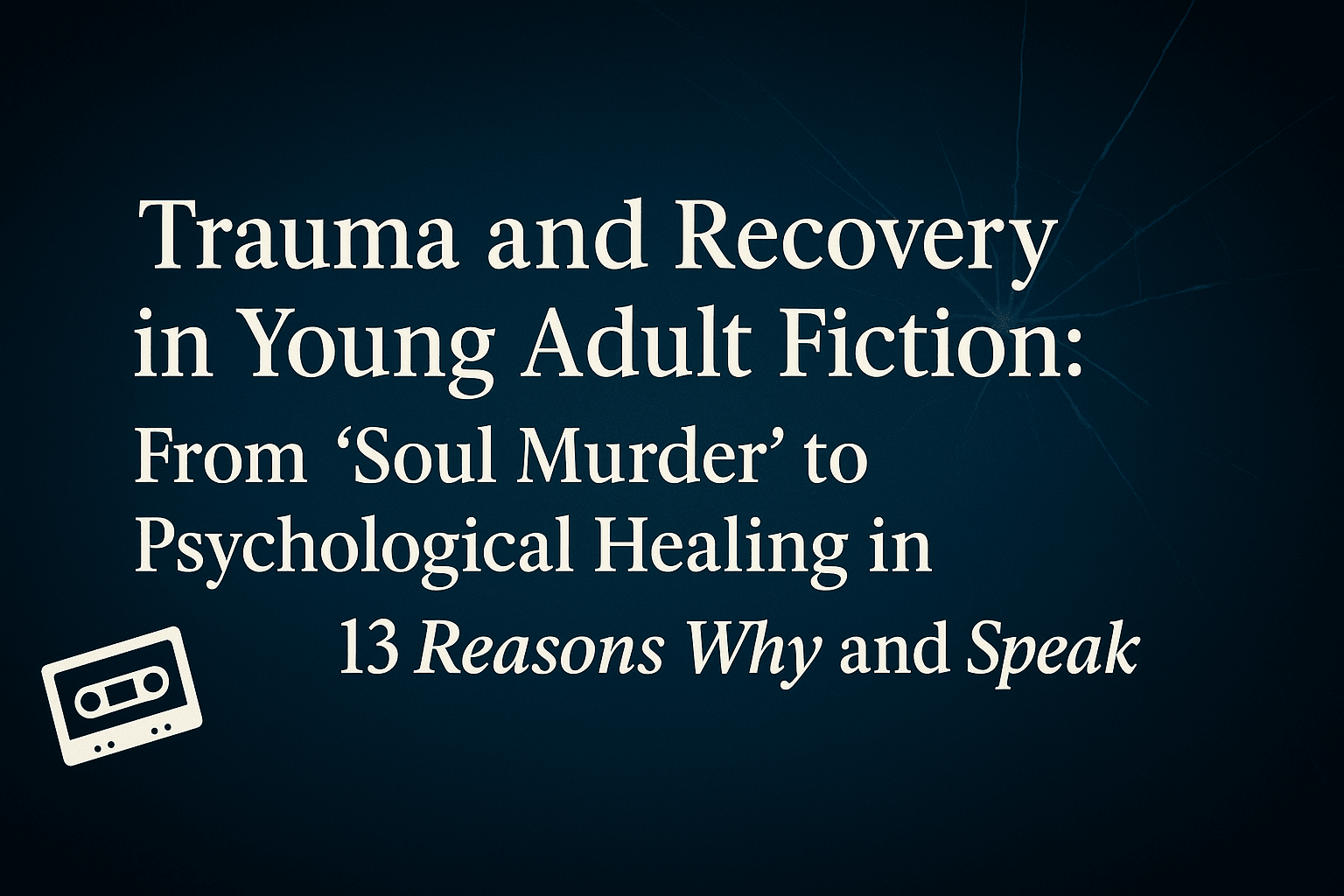Trauma and Recovery in Young Adult Fiction: From “Soul Murder” to Psychological Healing in 13 Reasons Why and Speak
Keywords:
trauma studies, young-adult fiction, soul murder, stages of healing, sexual assaultAbstract
This article examines the representation of adolescent trauma and the complex process of recovery in Jay Asher’s 13 Reasons Why (2007) and Laurie Halse Anderson’s Speak (1999). Drawing upon Leonard Shengold’s psychoanalytic concept of “soul murder” and Karen Duncan’s clinical model of the stages of healing, the study argues that the protagonists—Hannah Baker and Melinda Sordino—embody contrasting responses to trauma resulting from sexual assault and bullying. Shengold’s theory clarifies how abuse annihilates the victim’s sense of self, while Duncan’s model illuminates the conditions under which survivors may rebuild identity and agency. Through close textual analysis, the article demonstrates that Speak offers a narrative of reintegration made possible by internal resolve and external validation, whereas 13 Reasons Why depicts the destructive culmination of unacknowledged trauma. By situating these texts within contemporary literary trauma scholarship, the paper underscores the pedagogical and social significance of young-adult fiction as a medium for representing psychological suffering and modelling recovery. Ultimately, it contributes to literary trauma studies by foregrounding adolescence as a distinctive site where identity formation, victimization, and healing intersect.
Downloads
References
1. Anderson, L. H. (1999). Speak. Farrar Straus Giroux.
2. Asher, J. (2007). 13 reasons why. Penguin Books.
3. Balaev, M. (2012). The nature of trauma in American novels. Northwestern University Press.
4. Caruth, C. (1996). Unclaimed experience: Trauma, narrative, and history. Johns Hopkins University Press.
5. Duncan, K. (2004). Healing from the trauma of childhood sexual abuse: The journey for women. Praeger.
6. Felman, S., & Laub, D. (1992). Testimony: Crises of witnessing in literature, psychoanalysis, and history. Routledge.
7. Herman, J. (1992). Trauma and recovery. Basic Books.
8. LaCapra, D. (2001). Writing history, writing trauma. Johns Hopkins University Press.
9. Shengold, L. (1989). Soul murder: The effects of childhood abuse and deprivation. Yale University Press.
10. Trites, R. S. (2000). Disturbing the universe: Power and repression in adolescent literature. University of Iowa Press.
11. Vickroy, L. (2015). Reading trauma narratives: The contemporary novel and the psychology of oppression. University of Virginia Press.

Downloads
Published
Issue
Section
License
Copyright (c) 2024 Scholar Insight Journal

This work is licensed under a Creative Commons Attribution 4.0 International License.
Authors retain the copyright of their work. All articles in Scholar Insight Journal are published under the terms of the Creative Commons Attribution 4.0 International License (CC BY 4.0).
This license permits anyone to read, download, copy, distribute, print, search, or link to the full texts of the articles, and to use them for any other lawful purpose, without asking prior permission from the author(s) or the publisher, provided proper attribution is given to the original work.




